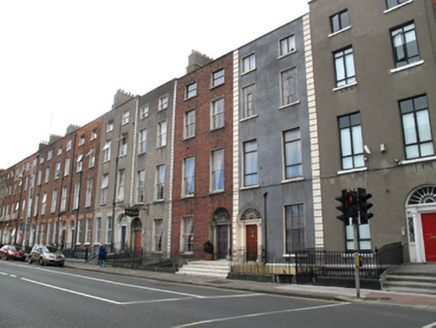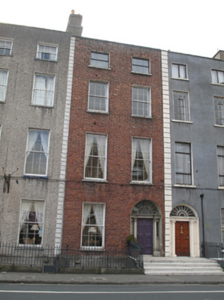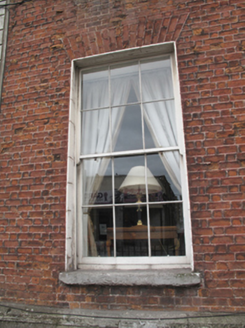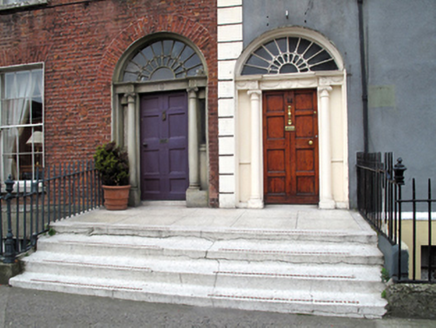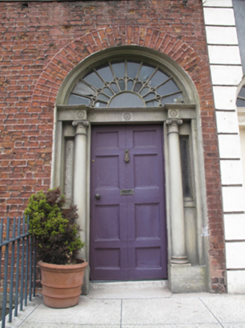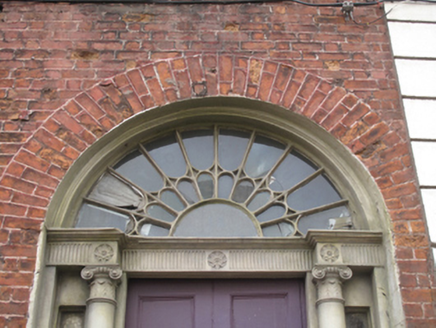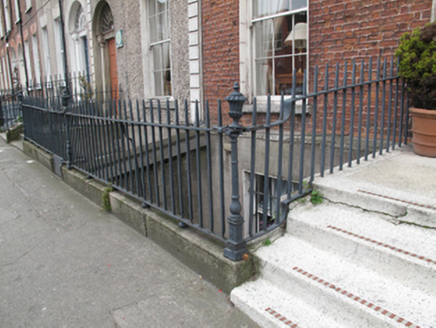Survey Data
Reg No
50010840
Rating
Regional
Categories of Special Interest
Architectural, Artistic
Original Use
House
In Use As
Guest house/b&b
Date
1790 - 1820
Coordinates
315900, 235519
Date Recorded
12/09/2011
Date Updated
--/--/--
Description
Terraced two-bay four-storey house over exposed basement, built c.1805. Built as pair with No. 13 and now in use as guest house. M-profile roof hidden behind parapet wall with granite coping. Rendered chimneystack to south party wall with clay pots. Red brick walls laid in Flemish bond with partially intact lime-pointing, set on painted masonry plinth course above ruled-and-lined rendered basement. Gauged brick flat-arched window openings with patent rendered reveals, painted masonry sills and replacement timber sliding sash windows, six-over-six pane to lower floors, three-over-three pane to basement with iron grille, and replacement uPVC windows to third floor. Gauged brick round-headed door opening with moulded surround and painted masonry Ionic doorcase, with original flat-panelled timber door, columns having raised plinth blocks, supporting stepped and fluted lintel cornice and original radial iron fanlight. Door opens onto shared terrazzo platform bridging basement area, enclosed by original wrought-iron railings with cast-iron corner posts opening onto pavement via four terrazzo steps. Basement area enclosed by wrought-iron railing on moulded granite plinth wall. Round-headed opening at basement level, accessing area under footpath.
Appraisal
Gardiner Street Upper was laid out by Luke Gardiner II as part of the development of Mountjoy Square in 1792, and this terrace, lining the west side of the street, was completed by 1818. This Georgian townhouse has a good Ionic doorcase with sidelights and a decorative fanlight. The retention of good-quality replacement timber sash windows contributes to the architectural heritage value of the building. The retention also of the plinth, railings and gate to the basement area, and of steps to the entrance, enhances this house. One of the better houses on the terrace, the form and composition maintaining the alignment of the neighbouring buildings, and the wrought-iron railings add an element of continuity which draws the streetscape together.
